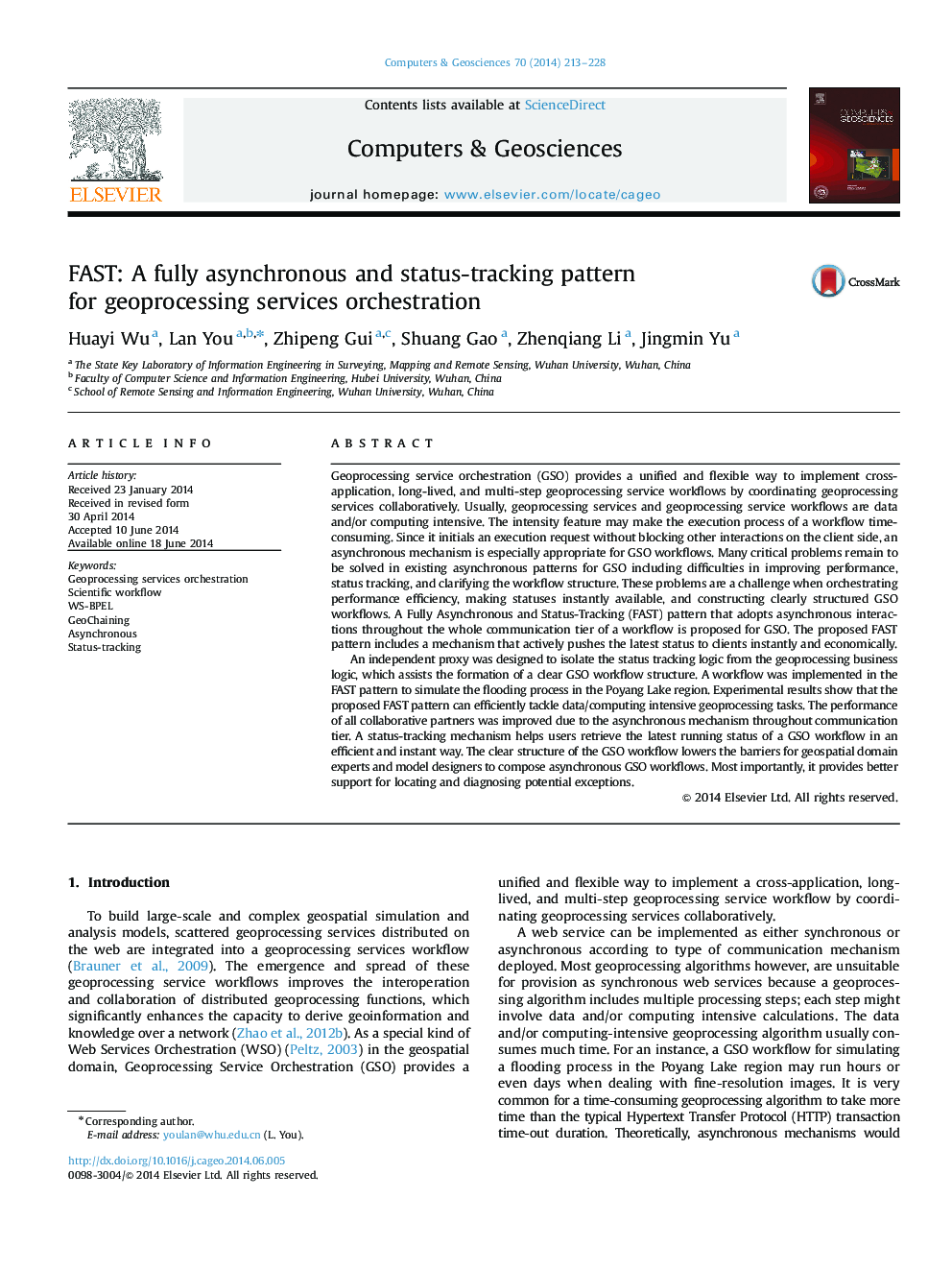| کد مقاله | کد نشریه | سال انتشار | مقاله انگلیسی | نسخه تمام متن |
|---|---|---|---|---|
| 507221 | 865101 | 2014 | 16 صفحه PDF | دانلود رایگان |

• We propose a Fully Asynchronous and Status-Tracking (FAST) pattern for GSO.
• We examine the effectiveness of the FAST pattern in a flood submergence case.
• The performance of each collaborator in the FAST pattern is improved using a fully asynchronous mechanism.
• A status-tracking mechanism actively pushes status efficiently and instantly.
• The FAST pattern makes the structure of a GSO workflow simple and clear.
Geoprocessing service orchestration (GSO) provides a unified and flexible way to implement cross-application, long-lived, and multi-step geoprocessing service workflows by coordinating geoprocessing services collaboratively. Usually, geoprocessing services and geoprocessing service workflows are data and/or computing intensive. The intensity feature may make the execution process of a workflow time-consuming. Since it initials an execution request without blocking other interactions on the client side, an asynchronous mechanism is especially appropriate for GSO workflows. Many critical problems remain to be solved in existing asynchronous patterns for GSO including difficulties in improving performance, status tracking, and clarifying the workflow structure. These problems are a challenge when orchestrating performance efficiency, making statuses instantly available, and constructing clearly structured GSO workflows. A Fully Asynchronous and Status-Tracking (FAST) pattern that adopts asynchronous interactions throughout the whole communication tier of a workflow is proposed for GSO. The proposed FAST pattern includes a mechanism that actively pushes the latest status to clients instantly and economically.An independent proxy was designed to isolate the status tracking logic from the geoprocessing business logic, which assists the formation of a clear GSO workflow structure. A workflow was implemented in the FAST pattern to simulate the flooding process in the Poyang Lake region. Experimental results show that the proposed FAST pattern can efficiently tackle data/computing intensive geoprocessing tasks. The performance of all collaborative partners was improved due to the asynchronous mechanism throughout communication tier. A status-tracking mechanism helps users retrieve the latest running status of a GSO workflow in an efficient and instant way. The clear structure of the GSO workflow lowers the barriers for geospatial domain experts and model designers to compose asynchronous GSO workflows. Most importantly, it provides better support for locating and diagnosing potential exceptions.
Journal: Computers & Geosciences - Volume 70, September 2014, Pages 213–228